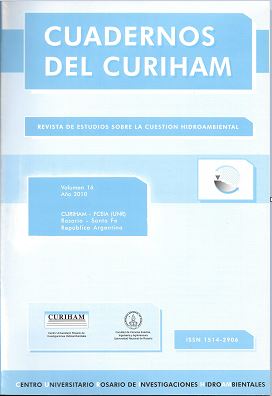Integración de cuencas de drenaje en áreas de llanura durante la última centuria. El caso del arroyo Las Lajas, Córdoba, Argentina
DOI:
https://doi.org/10.35305/curiham.v16i0.63Keywords:
Stream, Integration, EvolutionAbstract
Integration between mountain and plain basins had strong environmental consequences in the last century. This paper analyses morphohydrological evolution of Las Lajas stream (processes-cause-tendency) by using morphological and morphometric indicators for channel and valley obtained from old cartography and present surveys. In early XX century, the stream began in the mountains, was semipermanent, and ended in a depressed area. In 50 ́s decade, it joined Santa Catalina stream, by backward erosion and coalescence of multiple headcuts of ephemeral and discontinuous courses. The stream evolved from semipermanent and endoreic regime with flooding-sedimentation processes to permanent-exoreic regime with transport processes. Headcuts migrations are related to humid periods (1953-1968, 1972-present time) and channelizations. Channel length, valley depth, flooding, and backward headcuts were most sensitive indicators. Control structures control adjustment process by stabilizing the stream and reducing erosion hazard.
Downloads
Downloads
Published
How to Cite
Issue
Section
License
Copyright (c) 2010 Nelso Doffo, Susana Degiovanni, Mónica Villegas

This work is licensed under a Creative Commons Attribution-NonCommercial-ShareAlike 4.0 International License.



























